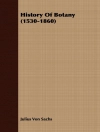This book includes selected papers from the 4th International Conference on Computational Vision and Bio Inspired Computing (ICCVBIC 2020), held in Coimbatore, India, from November 19 to 20, 2020. This proceedings book presents state-of-the-art research innovations in computational vision and bio-inspired techniques. The book reveals the theoretical and practical aspects of bio-inspired computing techniques, like machine learning, sensor-based models, evolutionary optimization and big data modeling and management that make use of effectual computing processes in the bio-inspired systems. As such it contributes to the novel research that focuses on developing bio-inspired computing solutions for various domains, such as human–computer interaction, image processing, sensor-based single processing, recommender systems and facial recognition, which play an indispensable part in smart agriculture, smart city, biomedical and business intelligence applications.
Innehållsförteckning
Chapter 1. Smart Surveillance Syst+D2:F64em by Face Recognition and Tracking using Machine Learning Techniques.- Chapter 2. Object-based Neural Model in Multicore Environments with Improved Biological Plausibility.- Chapter 3. Advancement in Classification of X Ray Images Using Radial basis Function with Support of Canny Edge Detection Model.- Chapter 4. Brain Tumour Three Class Classification on MRI Scans using Transfer Learning and Data Augmentation.- Chapter 5. Assessing the Statistical Significance of Pairwise Gapped Global Sequence Alignment of DNA Nucleotides using Monte-Carlo Techniques.- Chapter 6. Principal Intregant Analysis Based Liver Disease Prediction using Machine Learning.- Chapter 7. Classification of Indian Classical Dance 3D Point Cloud Data using Geometric Deep Learning.- Chapter 8. Fire Detection by Parallel Classification of Fire and Smoke using Convolutional Neural Network.- Chapter 9. Iris Image Denoising in Spatial Domain: An Implementation based on Modified Median Filtering Approach.- Chapter 10. A Split Key Unique Sudoku Steganography (SKUSS) Based Reversible High Embedded Data Hiding Technique.- Chapter 11. Identification of Insomnia based on Discrete Wavelet Transform using Time domain and Non-Linear features.- Chapter 12. Transfer Learning Techniques for Skin Cancer Classification.- Chapter 13. Particle Swarm Optimization Based on Random Walk.- Chapter 14. Signal processing Algorithms based on Evolutionary Optimization Techniques in the BCI: A Review.- Chapter 15. Cancelation of 50Hz and 60Hz Power-line Interference from Electrocardiogram using Square-root Cubature Kalman Filter.
Om författaren
Dr. S. Smys received his M.E. and Ph.D. degrees all in Wireless Communication and Networking from Anna University and Karunya University, India. His main area of research activity is localization and routing architecture in wireless networks. He serves as Associate Editor of Computers and Electrical Engineering (C&EE) Journal, Elsevier, and Guest Editor of MONET Journal, Springer. He has served as a reviewer for IET, Springer, Inderscience and Elsevier journals. He has published many research articles in refereed journals and IEEE conferences. He has been General chair, Session Chair, TPC Chair and Panelist in several conferences. He is a member of IEEE and a senior member of IACSIT wireless research group. He has been serving as Organizing Chair and Program Chair of several international conferences, and in the Program Committees of several international conferences. Currently, he is working as Professor in the Department of CSE at RVS Technical Campus, Coimbatore, India.
João Manuel R. S. Tavares graduated in Mechanical Engineering at the Universidade do Porto, Portugal, in 1992. He also earned his M.Sc. degree and Ph.D. degree in Electrical and Computer Engineering from the Universidade do Porto in 1995 and 2001 and attained his Habilitation in Mechanical Engineering in 2015. He is a senior researcher at the Instituto de Ciência e Inovação em Engenharia Mecânica e Engenharia Industrial (INEGI) and Associate Professor at the Department of Mechanical Engineering (DEMec) of the Faculdade de Engenharia da Universidade do Porto (FEUP). His main research areas include computational vision, medical imaging, computational mechanics, scientific visualization, human–computer interaction and new product development.
Dr. Fuqian Shi currently working as Graduate Faculty Scholar, College of Graduate Studies at the University of Central Florida, USA. He has published more papers in standard journal and conferences. He has acted as a committee member in many international conferences and editorial board in refereed journals. He acted as a reviewer in many reputed journals. He is a member of professional bodies like IEEE, IEEE Computer Society, Society, Man and Cybernetics, Computational Information System, ACM, Zhejiang Provincial Industrial Design Association and Information Management Association of Wenzhou City. His research interest includes computer networks, computer programming, computer graphics, image processing, data structure, operating system and medical informatics.
Robert Bestak obtained Ph.D. degree in Computer Science from ENST Paris, France (2003) and M.Sc. degree in Telecommunications from Czech Technical University in Prague, CTU, Czech Republic (1999). Since 2004, he has been an Assistant Professor at the Department of Telecommunication Engineering, Faculty of Electrical Engineering, CTU. He participated in several national, EU, and third party research projects. He is the Czech representative in the IFIP TC6 organization, and chair of the working group TC6 WG6.8. He annually serves as Steering and Technical Program Committee member of numerous IEEE/IFIP conferences (Networking, WMNC, NGMAST, etc.) and he is member of editorial board of several international journals (Computers & Electrical Engineering, Electronic Commerce Research Journal, etc.). His research interests include 5G networks, spectrum management and big data in mobile networks.












